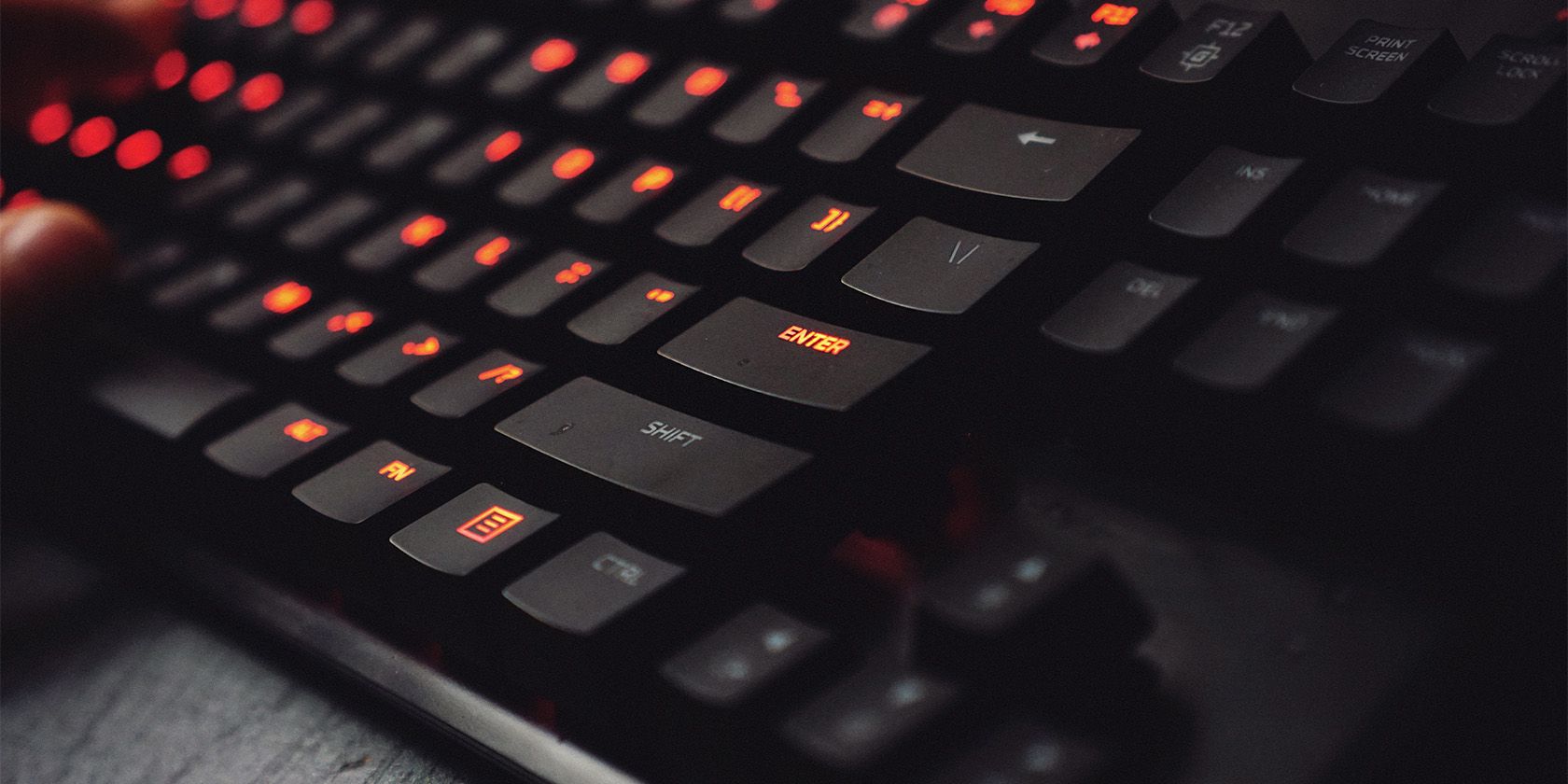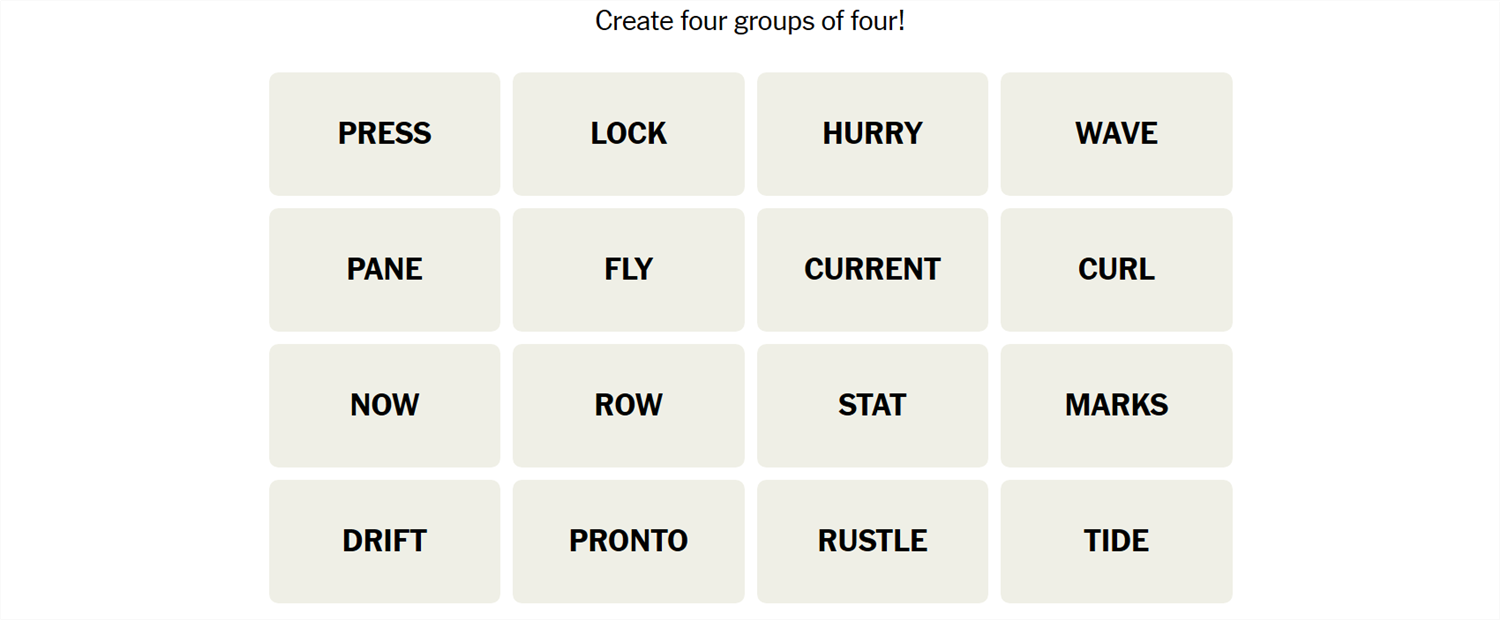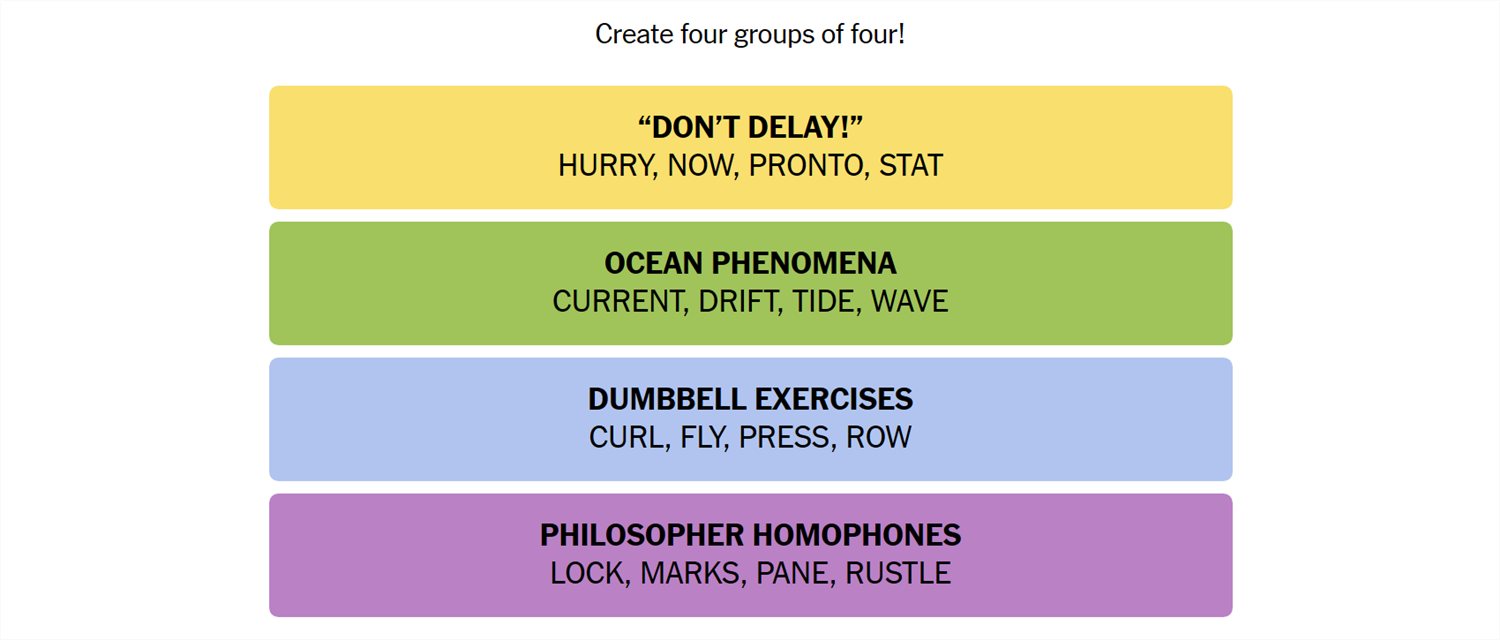
NYT Daily Connection Insights & Answers: Unveiling June 1St Edition #356

NYT Daily Connection Insights & Answers: Unveiling June 1St Edition #356
Quick Links
- What Is Connections?
- Hints for Today’s Connections Groups
- Today’s NYT Connections Answers
- How Did We Solve This Connections Game?
- How Do You Guess Connections Groups?
Connections is a game from the New York Times that challenges you to find the association between words. It sounds easy, but it isn’t—Connections categories can be almost anything, and they’re usually quite specific. If you need a hand getting the answers, we’ve got you covered.
What Is Connections?
Connections is a game from the New York Times. The objective is simple: sort 16 words into groups of 4. Each group of words will be connected by some common idea or theme. That common element could be anything. We have seen everything from games that rely on the number of letters in the words to categories that require you to spot an extra letter at the end of the word. Sometimes they’re references to economics, other times they reference fairy tales. There is no telling what sort of association there will be between words.
Once you’re confident you understand the connection, select 4 words, then hit “Submit.” You have only four attempts in total, so don’t be too guess-happy.
Hints for Today’s Connections Groups
Here are a few hints for the 356th Connections game to get you started:
- Yellow: Rush
- Green: El Niño and La Niña
- Blue: Getting fit.
- Purple: Think Socrates.

If you still need help, the actual group names are:
- Yellow: Don’t Delay
- Green: Ocean Phenomena
- Blue: Dumbbell Exercises
- Purple: Philosopher Homophones
Today’s NYT Connections Answers

Don’t Delay (Yellow):
Hurry, Now, Pronto, Stat
Ocean Phenomena (Green):
Current, Drift, Tide, Wave
Dumbbell Exercises (Blue):
Curl, Fly, Press, Row
Philosopher Homophones (Purple):
Lock, Marks, Pane, Rustle
How Did We Solve This Connections Game?
June 1st was pretty straightforward.
The first word I looked at was hurry. Thankfully, there isn’t much ambiguity there, and now, pronto, and stat all fell into place very easily. They all belonged to the Yellow group, “Don’t Delay.”
I shuffled a few times until curl and press wound up next to each other, and I realized I was looking at exercise terms. Of the remaining words, only row and fly (both exercises you can do with a dumbbell or machine) really fit. Blue, as seemed likely, was “Dumbbell Exercises.”
Tide and wave are ocean terms (or can be), and they fit nicely with draft and current. They were in the Green group, which was “Ocean Phenomena.”
That left lock, marks, pane, and rustle. Once again, saying the words out loud helped a lot. They’re homophones for the last names of a few prominent philosophers: John Locke, Karl Marx, Thomas Paine, and Bertrand Russell. Purple was “Philosopher Homophones.”
How Do You Guess Connections Groups?
There is no quick, reliable way to approach Connections like there is with Wordle, since Connections isn’t algorithmic. However, there are a few things to keep in mind that can help.
- Look for similar parts of speech. Are some words verbs and others nouns? Are some adjectives? Try mentally grouping them based on those categories and see if any other patterns jump out at you.
- Are the words synonyms? Sometimes categories will just be synonyms for a phrase, or very close to synonyms. Don’t rely too closely on this, though. Occasionally, Connections will deliberately throw in words that are sometimes synonyms to mislead you.
- Try saying the words. Sometimes, saying the words helps. One puzzle we saw included the words go, rate, faster, clip, pace, speed, move, commute, and hurry—all of which are obviously related to the idea of motion. However, when you say them, it becomes a little more obvious that only four (go, move, hurry, faster) are things you’d actually say to prompt someone to get moving.
- Expect the red herring . Connections usually has words that could be plausibly, yet incorrectly, grouped together. Take the words Bud, Corona, and Light, as an example. You might instinctively see those three words together and assume they’re lumped together in a category related to beer—but they weren’t.
- Look for distinct words. If a word on your board doesn’t have multiple meanings or can really only be used in one context, try using that word as the basis for a category.
- Shuffle the board. Sometimes, moving words around will help you look at them in new ways.
If you didn’t solve this one, don’t feel too bad—there’s always tomorrow! And those words may align with a topic you’re interested in, giving you a leg up on the competition.
Also read:
- [New] Free VIDEO Tools Working Across Systems Seamlessly for 2024
- [New] Home Cinematic Excellence with 5 Quick Tips for 2024
- [Updated] Captivate Audiences Perfecting Snapchat's Boomerang Feature
- [Updated] In 2024, Rapid Rendering PowerPoint Recordings
- 快速無成本轉換SWF影片成AVI:簡介 Movavi 工具
- Analyzing Face-Editing Tools Polaroid Cube Vs. GoPro Hero Series
- Conversion Facile Et Gratuite Des Fichiers SWF en MKV Avec Movavi
- Convert Your SWF Files Into Professional-Quality MP4 Videos for Free with Ease - Moveavee
- Discovering the Premier Soundbringers
- Edit and Enhance Videos with CapCut on Windows: The Ultimate Tutorial for Newbies
- Effortless AAC Audio Conversion From OGG Online at No Cost - Movavi's Expert Solution
- Sky High Selfies and Beyond An Insightful Analysis of DJI Spark
- Transformación Libre De Embalaje: Conversión FLV-AVI Online Eficiente Con Herramientas De Movavi
- Title: NYT Daily Connection Insights & Answers: Unveiling June 1St Edition #356
- Author: Christopher
- Created at : 2025-01-01 17:30:09
- Updated at : 2025-01-03 00:37:00
- Link: https://some-approaches.techidaily.com/nyt-daily-connection-insights-and-answers-unveiling-june-1st-edition-356/
- License: This work is licensed under CC BY-NC-SA 4.0.